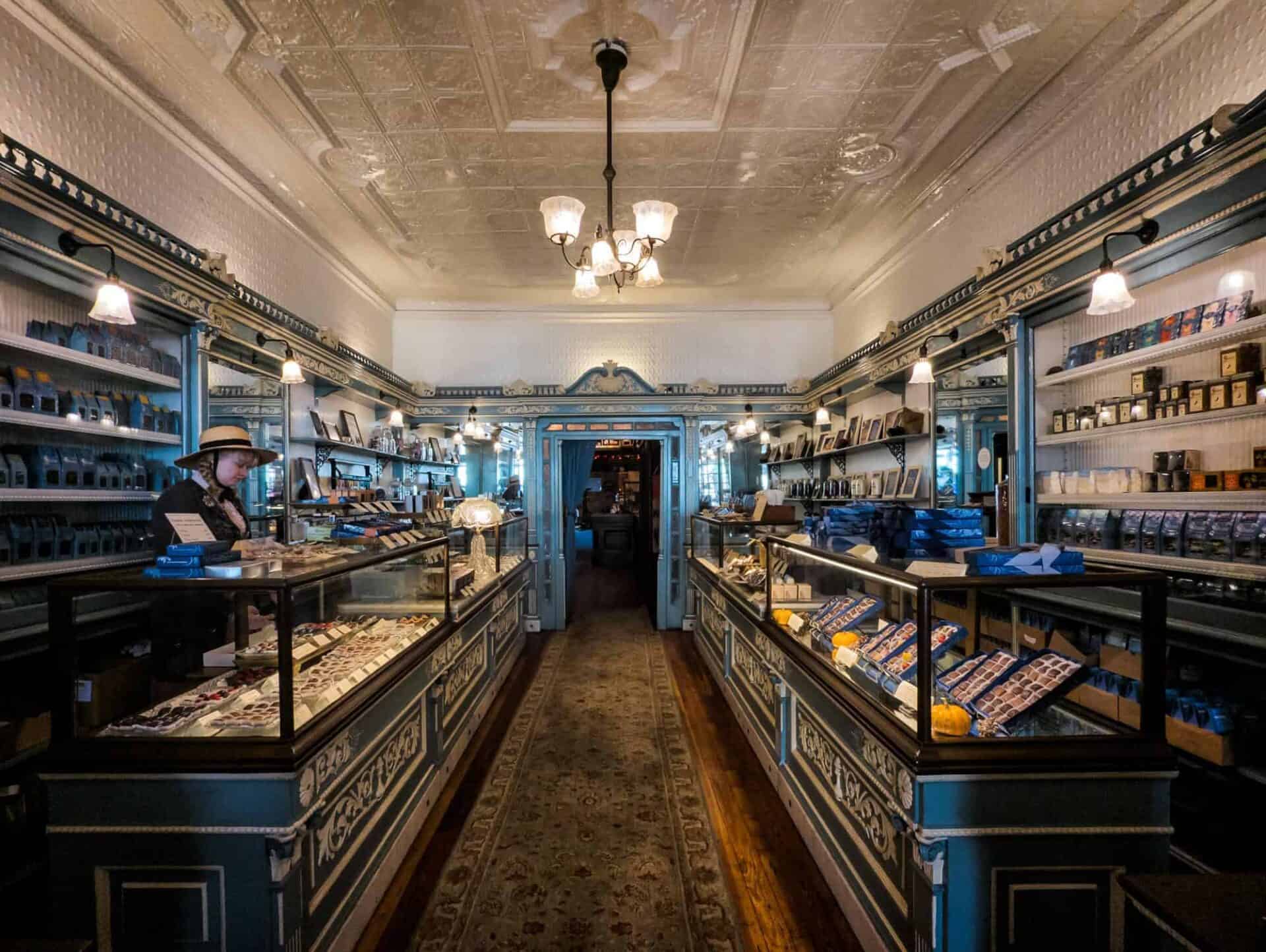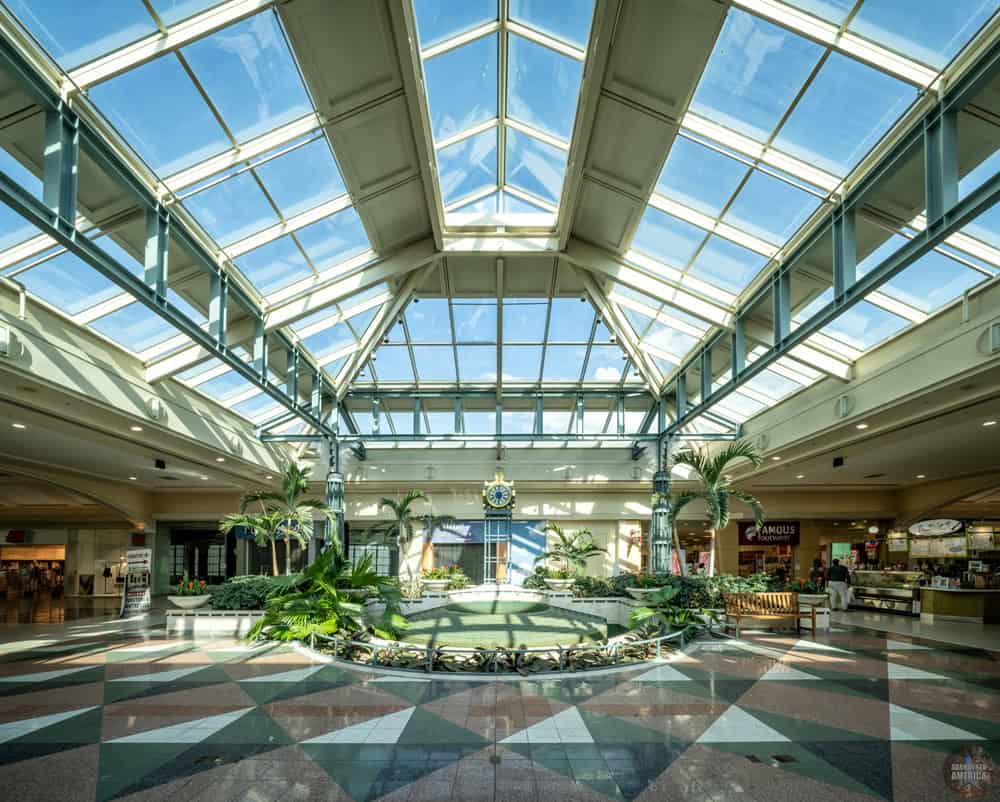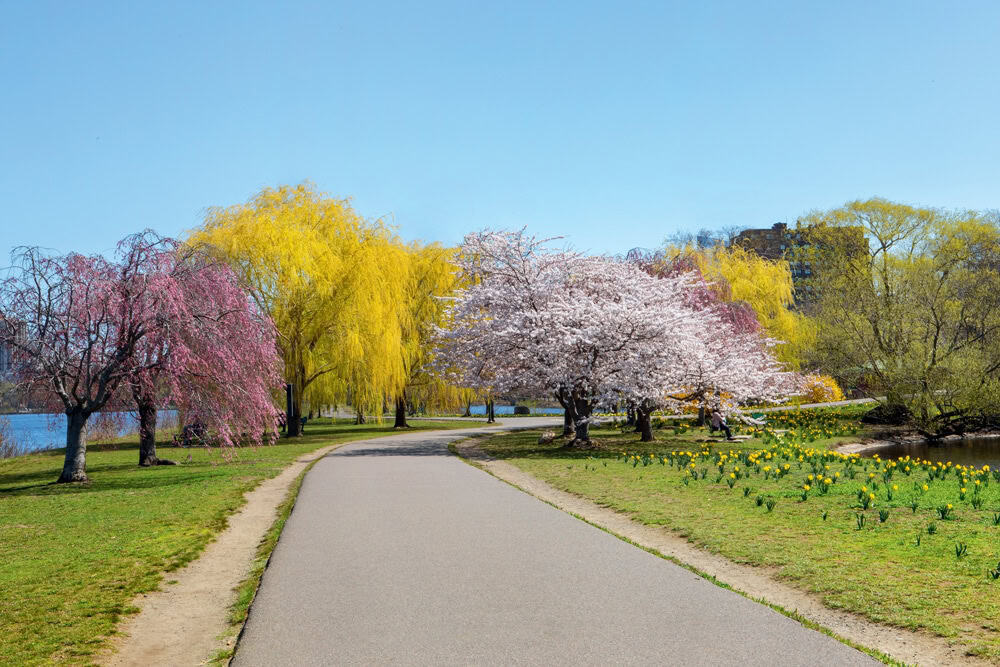
Visiting Richmond Then & Now
Richmond is the capital city of the Commonwealth of Virginia in the United States. Incorporated in 1742, Richmond has been an independent city since 1871. The metro area population of Richmond was 1,151,000 in 2024, a 0.96% increase from 2023. Richmond has an endless number of interesting places that were built over 100 years ago that you can visit today. After 160 years, the scars of the American Civil War remain deep in the fabric of the city. Much like Baltimore, MD, Richmond is a vibrant city of distinct neighborhoods.
The Monumental Church Built in 1814
The original building located on this site in Richmond, VA, was the Richmond Theatre. On December 26, 1811, over 600 people packed into the Theatre, which was designed to hold 500. Families, neighbors, and visitors were full of Christmas cheer and holiday spirit as they enjoyed what was to be the last theatrical production of the season. Men, women, children, Black, white, free and enslaved were there. The Placide and Green theater company had just lost a celebrated member – Eliza Poe, mother of Edgar Allan Poe.
While preparing for the second act, a pantomime entitled “Raymond & Agnes: or, the Bleeding Nun,” a chandelier ablaze with candles knocked into the scenery and set the stage on fire. When the initial sparks fell on the stage, the audience mistook it for lighting effects. However, the scenery quickly began to burn and the fire spread rapidly. An actor yelled “the house is on fire!” and panic began.
Everyone rushed to get out of the burning building as the fire intensified and the theater filled with thick black smoke. Those on the stage and in the gallery had their own exits. Those sitting in the upper boxes had a single exit through narrow passages and a single stairway that quickly collapsed under the weight of the evacuating people. Official records identified 72 people who perished in the chaos and conflagration.
It was a catastrophic event affecting almost everyone in Richmond. The fire was the deadliest urban disaster in the United States to have occurred at that time.
On the day after the fire, the city purchased the site of the old theater to create a perpetual memorial to the victims. While many important and prominent citizens died in the blaze, the victims represent a wide cross-section of society. From governor to student, young and old, the fire killed indiscriminately and in a final gesture of humanity, all but one are interred together in a crypt built on the ashes of the Richmond Theatre.
Completed in 1814, Monumental Church was designed by architect Robert Mills of South Carolina, best known for designing the Washington Monument and Thomas Jefferson’s only architectural pupil. Monumental Church remains one of the earliest and best examples of Greek Revival architecture in the United States, and is one of the first American monuments to incorporate Egyptian motifs.
The only way to get inside is to book a tour at the Monumental Church – https://historicrichmond.com/tour/
See the Route1Views post of the Monumental Church at https://route1views.com/travel/the-monumental-church-richmond-va/
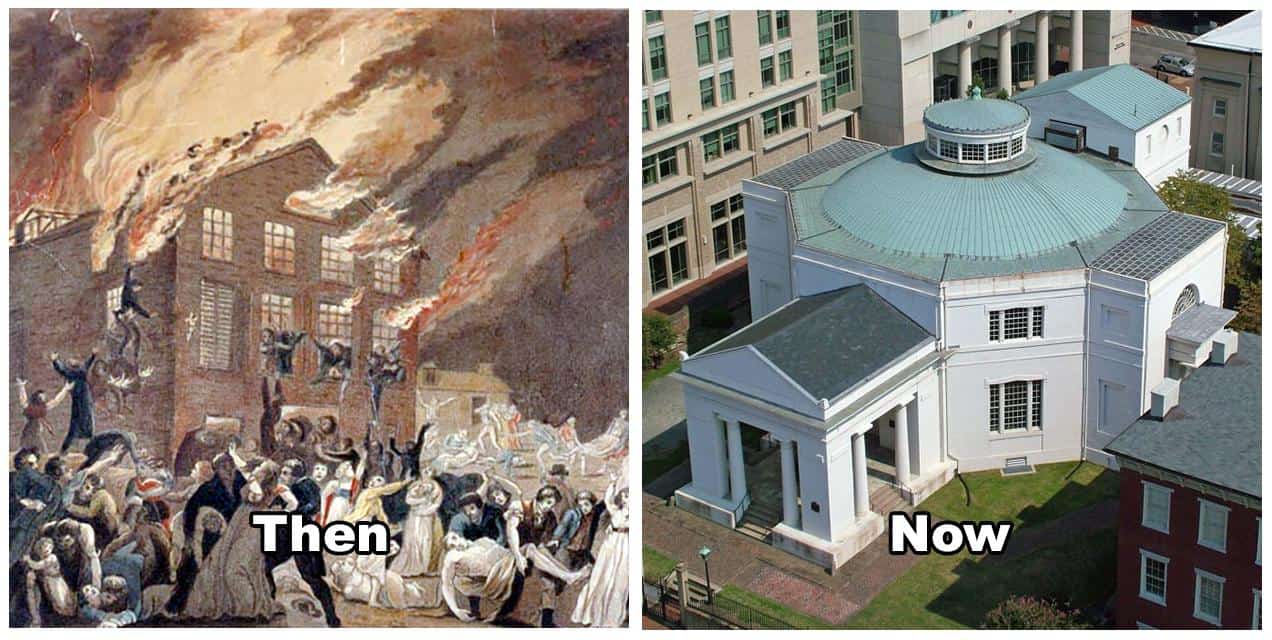
The Valentine Museum, Built in 1824
The Valentine Museum is one of the greatest institutional gems in Richmond. Constructed in 1824 by John Wickham, a prominent lawyer, the neoclassical mansion initially housed Wickham’s 17 children! The home was at the center of an urban plantation that relied upon slave labor. The Wickham House was purchased by meat juice magnate Mann S. Valentine after the Civil War, and was converted to a museum in 1898 following Mann’s death. It is the oldest museum in the city.
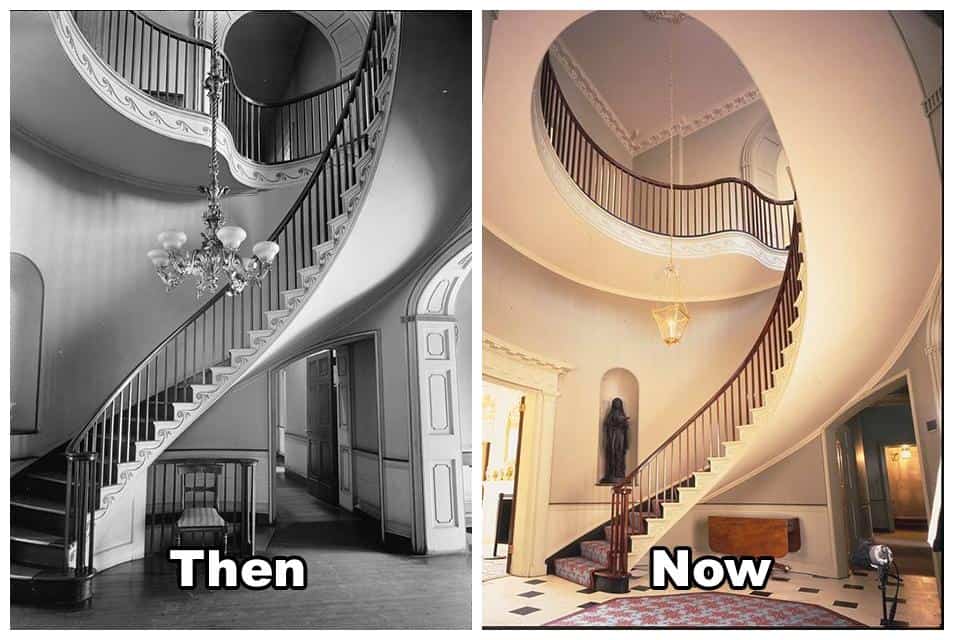
The Egyptian Building, built in 1845
As improbable as it seems, the Egyptian revival building was originally used for medical purposes, and it still is today. The medical department of Hampden-Sydney College was the first occupant, and because ancient Egyptian ruler Imhotep was at the forefront of medicine in ancient Egypt, the design theme was thought to be appropriate. Today, the rehabilitation medicine department of Virginia Commonwealth Medical Systems has offices there. The Egyptian Building is the most prominent feature of the VCU seal, and is part of the core identity of the University.
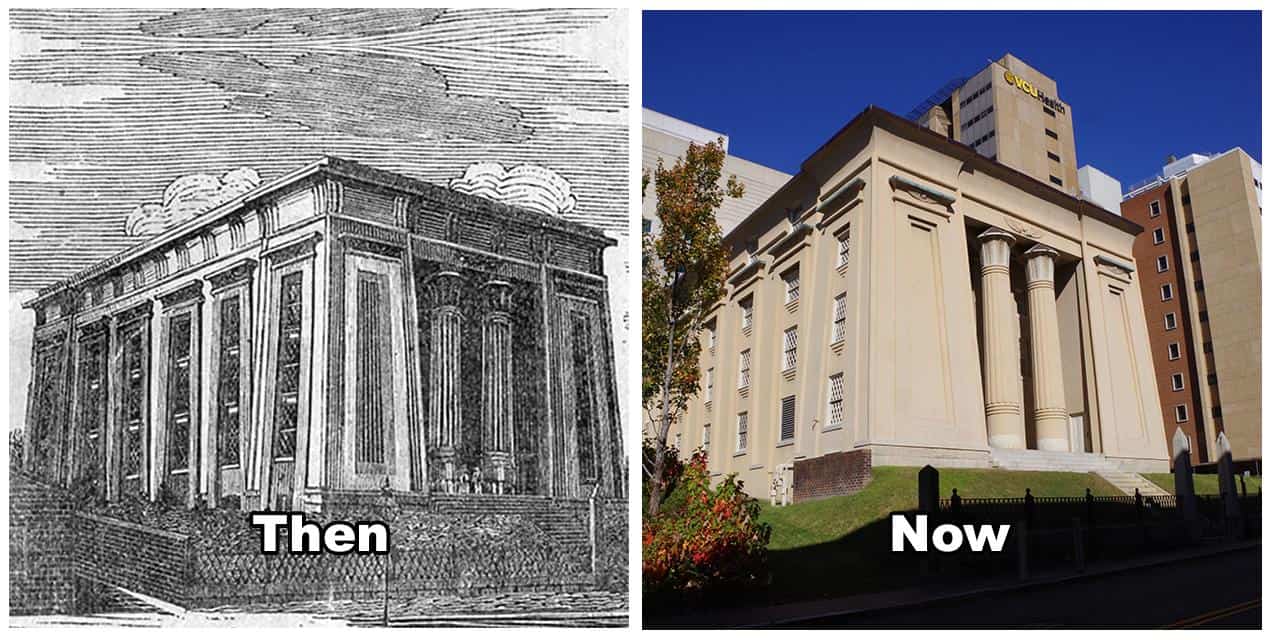
The Virginia State Capitol, Completed in 1788
Designed in part by Thomas Jefferson, The Capitol houses the Virginia General Assembly, which is the oldest legislative body in North America (1619). The Rotunda was adapted by the VA Legislature as The Hall of Presidents in 1930. It is one of the most revered spaces in the Commonwealth, featuring statues of eight Virginia-born US Presidents, with George Washington in its center. The Capitol became the Capital of the Confederacy during the Civil War (1861-65)
Leave time for the VA Capitol Grounds
The Capitol Grounds have many things to see, including the VA Washington Monument, The Bell Tower, The Virginia Civil Rights Monument, The Executive Mansion (1813, the oldest of its kind in the US) which you can tour separately, The Mantle – a tribute to Native Americans, A monument to VA women, a statue of Edgar Allan Poe, The Commonwealth Public Safety Memorial, A statue of Confederate General “Stonewall” Jackson, and several other statues and busts of important Virginians.

Byrd Theater, Cary Street, built in 1928
The development of a film-only venue in 1928 has kept Carytown movie-goers buying popcorn and filling the seats at the Byrd for almost 100 years. While talking films were just starting to take hold in1928, The Byrd has grown from a “Motion Picture Palace” to a community center for music and dance performances. Because the theater drew large crowds, it was influential to the establishment and growth of the Carytown shopping district, which remains one of the most vibrant neighborhoods of Richmond.

The Poe Museum Built in 1740
The Edgar Allan Poe Museum, is a museum located in the Shockoe Bottom neighborhood of Richmond, Virginia, dedicated to American writer E. A. Poe. Though Poe never lived in the building, it serves to commemorate his time living in Richmond. The museum holds one of the world’s largest collections of Poe’s original manuscripts, letters, first editions, memorabilia and personal belongings. The museum also provides a window into early 19th century Richmond, where Poe lived and worked. The Poe features the life and career of the author by documenting his accomplishments with pictures, relics, and verse, and by focusing on his many years in Richmond. The Poe Museum occupies the “Old Stone House“, C.1740, recognized as the oldest residential building in Richmond. Visit The Poe Museum and take a wonderful tour to learn all about Edgar Allan Poe, and the great poet that he was – https://poemuseum.org/
Once upon a midnight dreary, while I pondered, weak and weary,
The Raven by Edger Allen Poe
Over many a quaint and curious volume of forgotten lore—
While I nodded, nearly napping, suddenly there came a tapping,
As of some one gently rapping, rapping at my chamber door.
“’Tis some visitor,” I muttered, “tapping at my chamber door—
Only this and nothing more.“
See the Route1Views post of the The Poe Museum at https://route1views.com/travel/the-poe-museum-richmond-va/

Thomas Jefferson High School
An astonishing example of Art Deco architecture in the South. “Tee-Jay” opened in 1930 with 900 white students in the fast-growing Monument Park/ Willow Lawn neighborhood. The area West of downtown Richmond would maintain a degree of economic momentum despite the Great Depression. Designed by Richmond Public Schools Architect Charles M. Robinson, Thomas Jefferson High was placed on the National Register of Historic Places in 1993. The school was not racially integrated until 1970, when it was forced to do so by court order.

The American Civil War Museum
Also known as Tredegar, the former iron works and munitions factory on the James River was adapted to a museum, which opened in 2019. Housing thousands of artifacts that range from mundane possessions necessary to a 19th Century soldier’s life to “Traveller’s” saddle used by Robert E. Lee, you can spend weeks immersed in the two-level museum trying to see the entire collection in depth. The gift shop is first-rate, especially if you like to read about history!
Learn more at https://acwm.org/historic-tredegar/
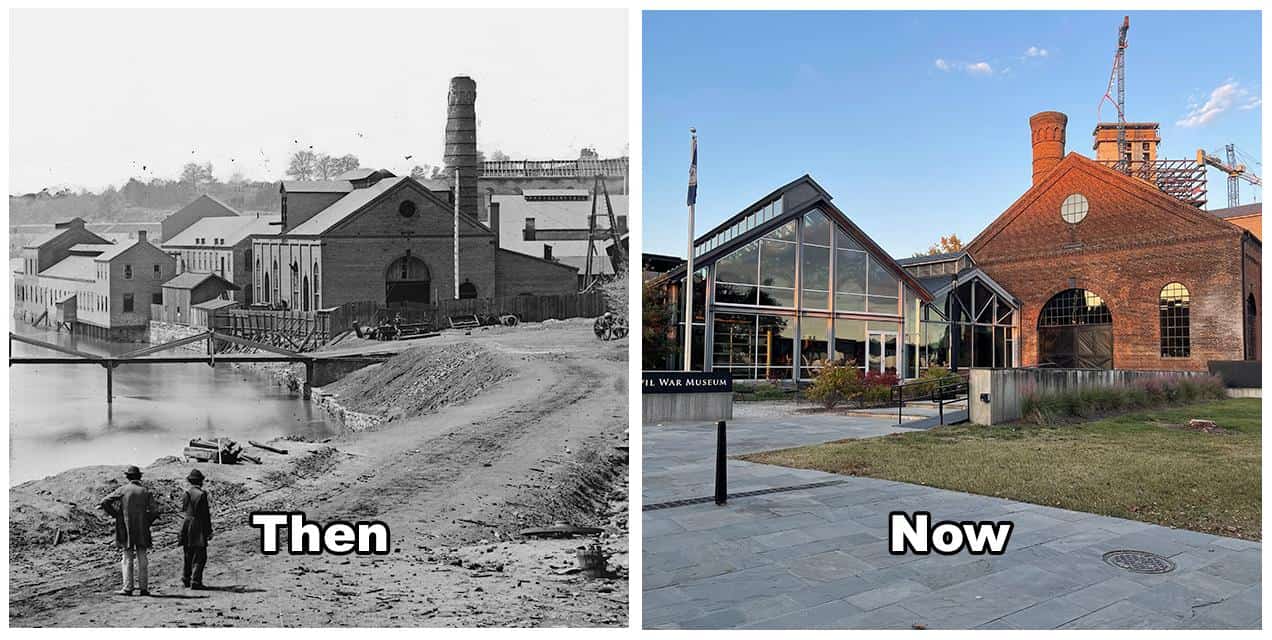
St. Claire Hotel 9th & Grace Sts.
Adjacent to the VA Capitol House once stood the St Claire Hotel. It was demolished in 1902 to make room for a much larger building, the Gilded Age-style Hotel Richmond. From 1933 to 1968, the Hotel was home to WRVA (1140 AM) , one of top radio stations in Virginia. Today, the former hotel is occupied by the Virginia Attorney General’s Office. The Hotel Richmond building was added to the National Register in 2009.

VA Museum of Fine Arts 1936
In 1919, Judge John Barton Payne took the unusual step of donating his personal collection of art to the Commonwealth of VA. Despite the economic depression that was to follow in 8 years, funding was secured for the establishment of a museum to house Payne’s collection of 50 paintings. In the decades that followed, prominent citizens generously donated their artistic treasures to VMFA, which necessitated regular expansions of its gallery spaces. Today, the museum has a 650,000 square feet of exhibition space in addition to its outdoor sculpture garden.
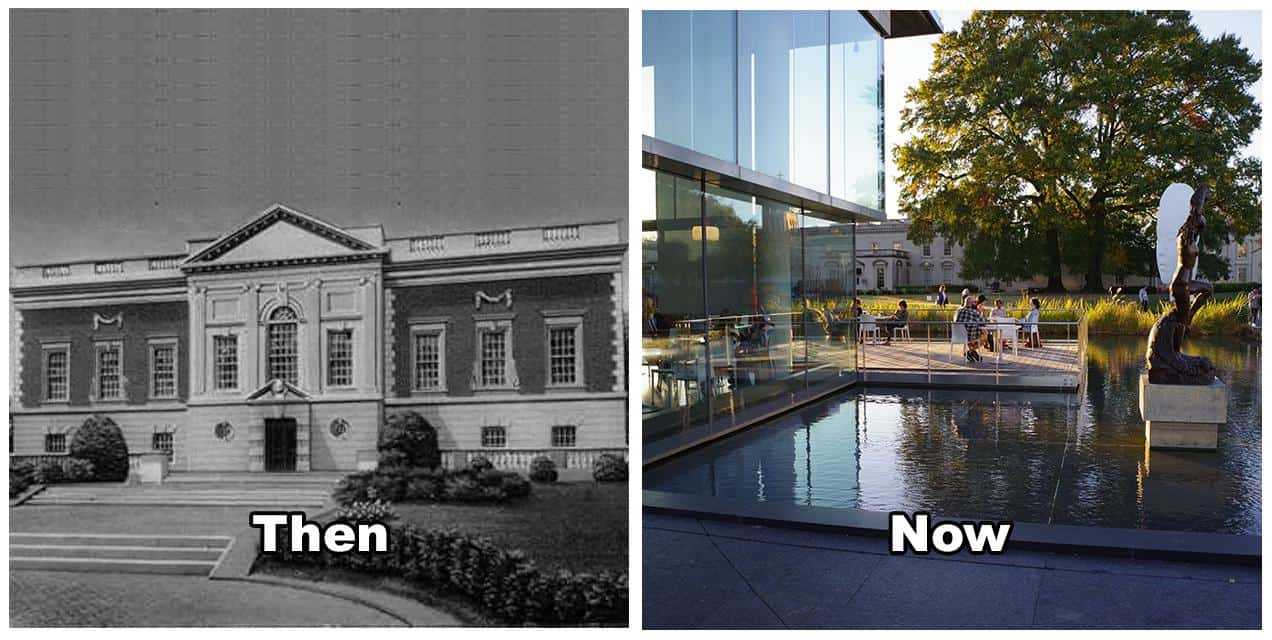
1007 East Main Street
Cast iron facades, like those in the 1000 block of Main Street were an economical way to create a repeating decorative street front as the City of Richmond rebuilt after the Civil War. This excellent example along Main Street has been dwarfed by nearby office towers, but is still occupied by small retail and service businesses.

Hollywood Cemetery Established in 1847
Hollywood Cemetery has immutable connections to the Confederacy. The grave of Jefferson Davis, President of the Confederacy, is located there, along with the graves of hundreds of Rebel soldiers that were disinterred from their burial places in Gettysburg, PA and reburied in Richmond after the Civil War had ended. About 18,000 Confederate soldiers are buried there, including Generals J.E.B. Stuart and George Pickett. Beautifully sited overlooking the James River, the Hollywood Cemetery offers one of the greatest Civil War walking history tours in Richmond.

The Virginia Washington Monument
The Virginia Washington Monument, known locally simply as the Washington Monument, is a 19th-century neoclassical statue of George Washington located on the public square in Richmond, Virginia. The Washington Monument features a 21-foot, 18,000-pound bronze statue of George Washington on horseback. Below Washington, (finished after the American Civil War) includes statues of six other noted Virginians who took part in the American Revolution: Thomas Jefferson, Patrick Henry, Andrew Lewis, John Marshall, George Mason, and Thomas Nelson Jr. The lowest level has six bronze female allegorical figures (muses / graces) that represent the ideas of “Colonial Times” (wielding an ax), “Finance” (wielding a ledger book), “Independence” (with broken shackles), “Bill of Rights” (wielding a sword) and “Revolution” (wielding a sword and crushing a king’s crown underfoot).
On April 30, 1863, Elements of George Washington on horseback on the monument were incorporated into the Seal of the Confederate States of America.
Learn More at https://www.tclf.org/landscapes/virginia-washington-monument

Capital Ale House
All of that walking history can take a toll. One of the best places to take a load off to recharge in Downtown Richmond is the Capital Ale House. Since 2002, the Ale House has offered hundreds of fermented options to choose from, so you’re sure to find an option that whets your whistle. The food is reasonably priced and is served in ample quantities. What you’ll eat is not fancy, but solid fare. Live music is a regular part of their offerings, as well, so maybe plan to stay all night!
https://capitalalehouse.com/locations/richmond
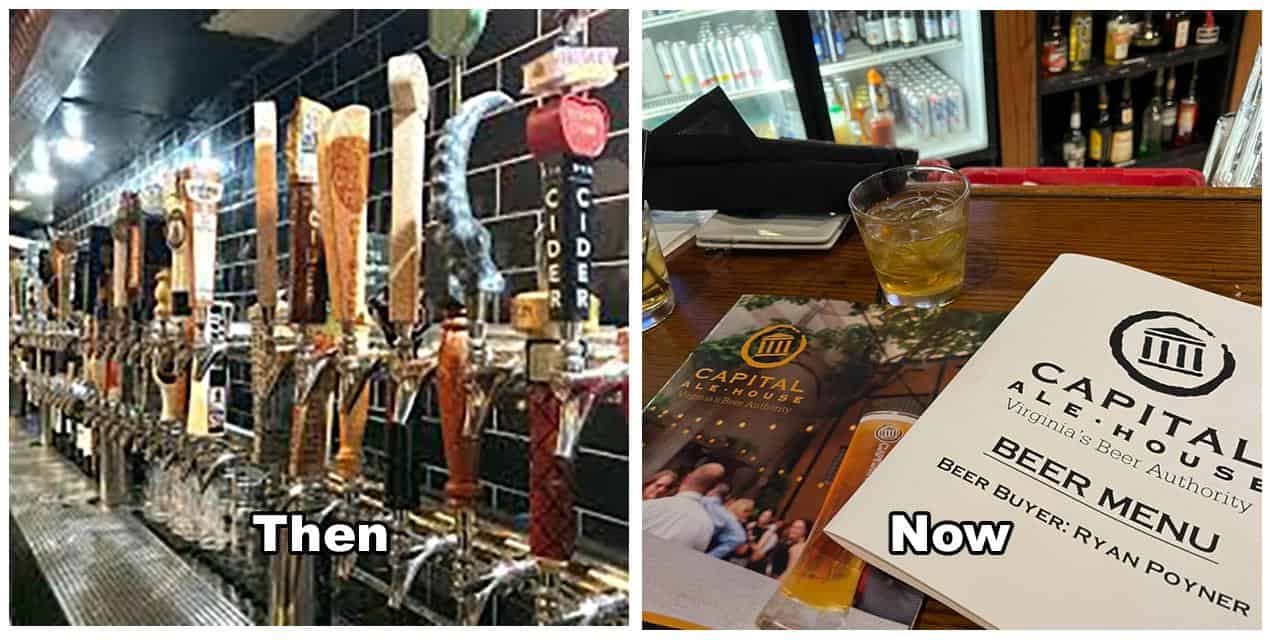
Green Book Additions
The Black American experience is a unique one in Richmond. The costs of dwelling in the capital of slavery can only be measured in generations, not years, and is only now coming into a clearer perspective for those who perpetrated misery on others. Scars are evident and deep in the history of the city and in the eyes of its residents. We tell these stories with the hope of healing those scars, rather than reopening them.
Richmond Slave Trail
The Slave Trail Commission was established by the City of Richmond in 1996 to preserve and present the history of slavery in the city. In 2011, a 5.5 mile trail was opened with 17 markers from Manchester docks to the East end of Richmond. By laying bare the harsh facts of servitude, the trail designers hoped to inspire reconciliation between the survivors of slavery and those who perpetrated cruelty during that era. Stops along the trail include Lumpkin’s Slave Jail, Negro Buring Ground, First African Baptist Church, and a Reconciliation Statue.


Arthur Ashe
Arthur Ashe’s Memorial on Memorial Drive was designed by Richmond sculptor Paul DePasquale The 12 foot tall bronze statue shows the tennis legend with a racquet in one hand, and books in the other, with children in the foreground. The statue was dedicated on what would have been Ashe’s 53rd birthday. He passed away in 1993 from AIDS-related pneumonia at 49 years old. Ashe was the only black man to win a singles title at the US Open, Australian Open, and Wimbleton. He was also the first black man to be selected to the Davis Cup team.
Ashe’s Memorial is the only one remaining on Memorial Drive. Memorials that depicted Civil War figures including Jefferson Davis and Gen. Robert E. Lee were all removed following protests in 2020.

William “Bojangles” Robinson
Bill “Bojangles” Robinson was born in Richmond 13 years after the end of the Civil War. He went on to become the top-earning black entertainer of the early 20th Century, famously performing a tap dance with Shirley Temple in the feature film “The Little Colonel” in 1935. He headlined Broadway shows, appeared at Harlem’s Cotton Club, and was named the honorary mayor of Harlem and the Mascot of the New York Giants baseball team.
His remarkable successes were marred by constant racial tension in his life as he broke many barriers along the way. Some in the African-American community called him an “Uncle Tom”, feeling that he reinforced black stereotypes in his roles on screen and stage. In 1908, Robinson was falsely accused of armed robbery and was sentenced to 15 years hard labor in Sing Sing Prison. He was exonerated on appeal, but for the rest of his life, Robinson treated the police and the way he traveled with a pistol with the utmost care.
Despite lifetime earnings of about $2M, Bojangles died penniless at age 61 from heart failure . TV host Ed Sullivan paid for his funeral.
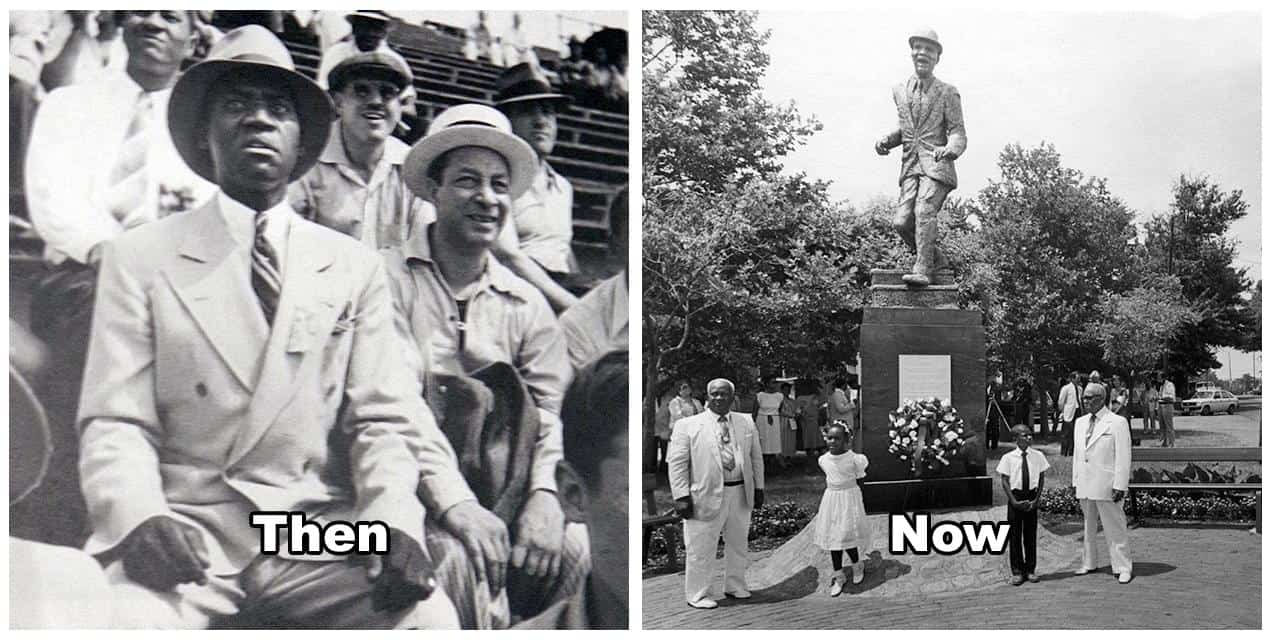
Source: Bill “Bojangles” Robinson: Richmond History Maker. Website: https://thevalentine.org. Published: January 22, 2021. Updated: May 28, 2024. Copyright: © 2024 The Valentine Museum.
